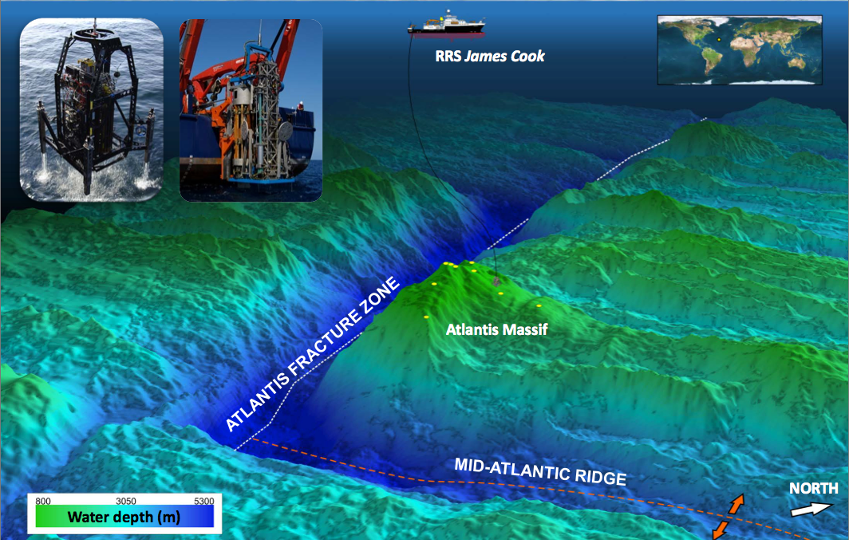
Drilling into the Atlantis Massif to Search for Rock-Powered Life
I have had the wonderful opportunity to participate in two seafloor drilling expeditions (IODP Expeditions 357 and 399) to investigate subseafloor life in the chain of submarine mountains in the middle of the Atlantic Ocean known as the Mid-Atlantic Ridge. These expeditions targeted one mountain, in particular, named the Atlantis Massif, because it is primarily composed of one special kind of rock called “serpentinite”. Serpentinites are formed when rocks from the Earth’s mantle are uplifted and exposed to water and thereby “serpentinized”, a geochemical process that releases hydrogen gas (H2) and is thought to have played a role in the origin of life. The process of serpentinization fuels a whole ecosystem of diverse microbes in the huge chimneys of the Lost City hydrothermal field, and it may be responsible for the ongoing geysers emanating from Enceladus.
A major goal of this expedition was to investigate the relationship between serpentinization and life so that we can better understand the origin and early evolution of life on Earth and to inform the search for life on other worlds where serpentinization is expected to occur.

In order to search for life inside these serpentinite rocks, we had to drill into the seafloor. Typically, ocean drilling (either for scientific research or for oil exploration) is conducted in seabed sediments, which are basically compacted mud. In some parts of the ocean, these sediments can accumulate into columns thousands of kilometers thick, which are scientifically and economically valuable for many reasons. It is very rare for ocean drilling expeditions to drill into the bedrock underneath the sediments because 1) there are currently no profitable resources to be extracted from the bedrock (but that may change in the near future) and 2) drilling into hard rock on the seafloor is extremely challenging from an engineering perspective.
You can read more about these expeditions and their research outcomes here:
- IODP Expedition 357 Report
- IODP Expedition 357 Initial Research Results by Chief Scientist Gretchen Früh-Green and the Scientific Party
- IODP Expedition 399 Homepage
- News article in Quanta Magazine
- News article in Washington Post
- News article in Science magazine
And my blog post has more about the Brazelton Lab’s specific role in this project.
Publications and Data from the Brazelton Lab
-
The first publication on the microbial diversity of subseafloor serpentinites, by Sheri Motamedi et al. (2020) * Supplemental data associated with this publication on GitHub.
-
Our assessment of the potential for contamination from drilling operations on subseafloor rock cores, by Lizethe Pendleton et al. (2021) * Supplemental data associated with this publication on GitHub.